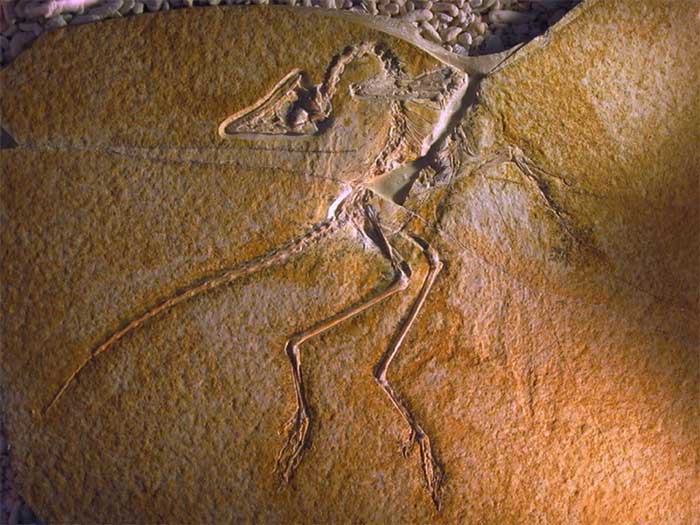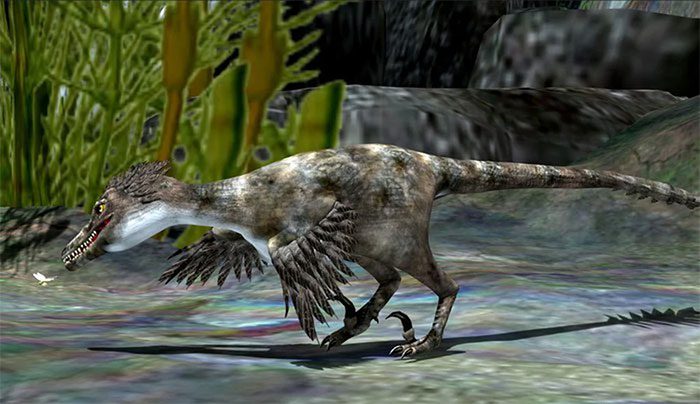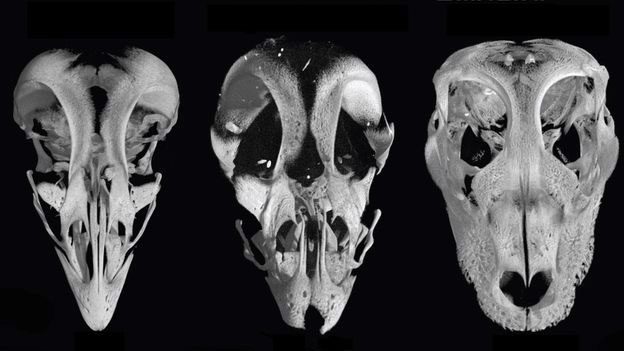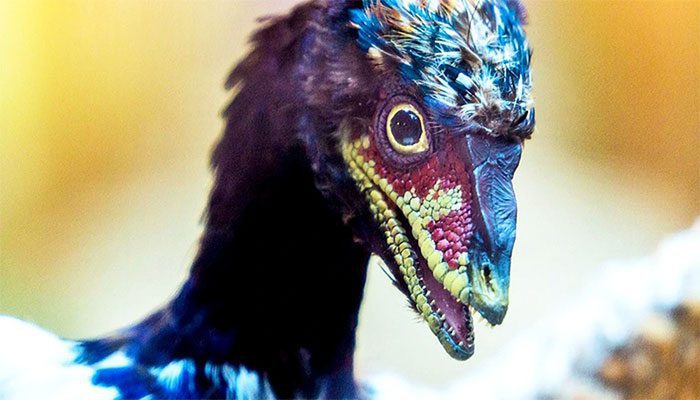In a groundbreaking experiment, scientists have transformed chicken embryos to give them a beak and palate configuration similar to small dinosaurs like Velociraptors and Archaeopteryx.
The lead authors of a study published in the journal Evolution stated that the original goal of this research was not to create a “dinosaur chicken.” Bhart-Anjan Bhullar from Yale University in New Haven and Arkhat Abzhanov from Harvard University in Cambridge, USA, initially aimed to understand the bird beak, a crucial part of avian anatomy that has been a key factor in their successful evolution.
“Whenever you examine a significant evolutionary change, you want to understand the underlying and most fundamental mechanisms,” Bhullar added.
The quest to uncover the mechanisms for recreating dinosaur-like physiological traits has captivated many since the idea that birds evolved from dinosaurs emerged in the 19th century, when scientists discovered fossils of a bird-like creature called Archaeopteryx. Similar to other recently discovered fossils, this winged and feathered animal had a striking resemblance to dinosaurs.

The fossil of a winged and feathered creature that closely resembles dinosaurs
We have always been curious about prehistoric dinosaurs and hold out hope that humanity might one day bring them back to life. With the technology and science of the 21st century, this could potentially become a reality, as long as the original DNA of dinosaurs can be extracted and their embryos can be developed in a laboratory.
However, these early birds did not resemble modern ones. Specifically, instead of having beaks, they had snouts like their dinosaur ancestors. To understand how they transitioned from snouts to beaks, Bhullar’s team intervened in the molecular processes that create beaks in chickens.
Bhullar said: “I wanted to understand the specific function of beaks and when this major transformation occurred from the snout of a typical vertebrate to the very unique structures used in birds.”
In attempting to do this, the research team created a chicken embryo with a dinosaur-like snout and palate, akin to that of small feathered dinosaurs like Velociraptors.

These early birds did not resemble modern ones.
We are all too familiar with the story in Jurassic Park, where dinosaurs were also resurrected through similar methods. In the film, scientists extracted dinosaur DNA from a mosquito that had fed on dinosaur blood and was preserved in amber.
Through cloning, a large number of dinosaurs were brought back to life, and the entire Isla Nublar became a paradise for dinosaurs. However, in reality, these science fiction concepts are very difficult to realize. DNA cannot be preserved for such a long time, even if it is perfectly protected by layers of amber.
The research team began by examining changes in how genes are expressed in chicken embryos and several other animals, including mice, crocodiles, whales, turtles, and lizards. The results of this experiment showed that birds possess a unique cluster of genes related to facial development that creatures without beaks do not have.
When scientists attempted to deactivate these genes, the beak structure reverted to a state similar to its ancestor, and the palate bones also followed suit.

The research team created a chicken embryo with a dinosaur-like snout and palate.
From the moment an organism dies, the DNA in its body gradually breaks down. A new scientific study in New Zealand has shown that the half-life of DNA is 521 years. In other words, after 521 years, half of the chemical bonds between deoxyribonucleotides are broken. The remaining half of the DNA chemical bonds will break down in the following years.
To achieve this genetic modification, the research team isolated proteins that could be used to develop beaks. They then used small particles coated with an inhibitor to block those proteins from functioning. As the skeleton began to develop inside the egg, the initial beak structure would transform into short, rounded bones instead of the long, fused beak found in bird skeletons.
Although Bhullar has no plans, nor ethical approval, to hatch chickens with dinosaur-like snouts, he believes that if they were to be born, they could certainly survive.
Bhullar explained: “These are not drastic modifications to the genes. In fact, this manipulation has much less impact compared to breeding chicken varieties developed by farmers.”

Modern bird embryos in the early stages of development are very similar to their ancestors.
In a similar experiment, researcher Joao Botelho at the University of Chile successfully recreated the genetic structure of bones in bird embryos. In modern birds, these bones do not extend to the ankle, but in their dinosaur ancestors, they certainly did.
Botelho’s team also found that modern bird embryos in the early stages of development closely resemble their ancestors. However, over time, the fibula shortens significantly. With this information, all the researchers had to do was “turn off” the gene inhibitor that allows this type of bone to develop at the embryonic level.
Once again, the researchers’ goal is not to bring dinosaurs back to life. Instead, they aim to understand the evolution of birds at the embryonic level.


















































